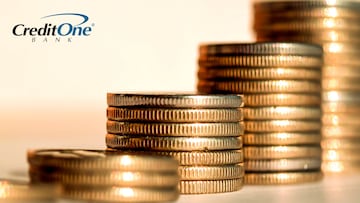When you get your credit card statement each month, do you look at the balance, decide how much of a payment to make, and then toss the statement aside? If you don’t take the time to carefully review your statement each month, you might be missing out on important information that could help you manage your finances better.
Here are seven things to keep an eye on the next time you review your credit card statement.
1. Where You’re Spending Your Money
Tracking your spending can help you get a better grasp on where your money goes each month and whether your spending aligns with your priorities. But remembering to record every single purchase you make can be a big hassle. If you use a credit card for your purchases, you have a built-in tracking mechanism you can use to your advantage.
Carefully reviewing your charges each month could help you determine whether your spending is on track or if you should consider making some changes. For example, if half of your purchases on the statement are for shoes, it may be time to reassess just how many more pairs of shoes you “need.”
2. Unauthorized Charges
Locating unauthorized charges is one of the most important reasons to carefully review your credit card statement each month. If you find a charge you don’t recognize, someone may have gotten ahold of your credit card or credit card number and they may be using it to go on a spending spree on your dime. If you find purchases you don’t recall making, report them to your credit card issuer right away. And be sure to check your other accounts to learn whether it’s only the one card that’s been compromised or you’re a victim of identity theft.
The credit card company will investigate any disputed charges. If they find you didn’t make or authorize the purchases, you shouldn’t be held liable for the charges.
3. Due Date
Do you know when your payment is due? It should appear somewhere on your credit card statement. Not knowing or paying attention to your due date could cost you more ways than one. First, if your payment is late, you might be charged a late fee. Under federal law, credit card issuers may charge you $28 for your first late payment and up to $39 if you have more than one late payment within a six-month period.
What’s more, your late payment may be reported to the credit bureaus, depending on how long after the due date it arrives. Since your payment history is the most important factor used in calculating your credit score, late payments could lower your score.
4. How Much of Your Credit Limit You’re Using
Your credit card statement not only lets you know how much you owe each month, it also shows your total credit line. The amount of credit you’re using compared to the amount you have available is known as your credit utilization ratio, which is another important criteria used in credit scoring formulas. Many experts recommend keeping this ratio at or below 30%.
Dividing your outstanding balance by your credit line will give you your credit utilization ratio on that particular credit card. For example, if you have an outstanding balance of $500 and a credit line of $2,000, then your credit utilization ratio is 500 ÷ 2,000, or .25, a credit utilization ratio of 25%.
5. APR Changes
If you don’t pay your balance in full each month, or your credit card doesn’t offer a grace period, it’s important to keep track of how much interest you’re being charged. Because interest rates on many credit cards are variable, they may fluctuate whenever the prime rate changes. And, if your card has a penalty APR, your rate may increase if you miss a payment or pay late.
Regardless of why the APR you’re being charged might change, knowing what that rate is will help you understand how much you’re paying in interest and make any necessary changes.
6. Applied Credits
When you return an item purchased with your credit card, do you just assume a credit will appear on your next statement? If so, you may want to rethink that strategy.
Mistakes happen, so it’s a good idea to go through your statement thoroughly and confirm that any and all credits you’re owed get applied to your account. If they don’t, it may be time to contact the merchant with whom you made the return to see what’s holding it up.
7. Auto-Payments You May Want to Cancel
Many companies make it easy to sign up for subscription-based services with monthly or annual fees that are automatically charged to your credit card when their payment is due. This is convenient for both parties and can be helpful if you’re paying for something you use on a regular basis.
But what happens when you no longer need, want, or use the service and forget that you’re still being charged for it? Checking your credit card statement each month can alert you to payments being made for a service you wish to cancel, which can put more of your hard-earned money back in your pocket.
If you’re used to giving your credit card statement a passing glance, now might be a good time to start reviewing it more carefully. Spending an extra minute or two going through your statement each month could help save you money and alert you to any signs of fraud or identity theft that could slip through the cracks if you just give it a perfunctory glance.
Jennifer Brozic began her writing career at seven years old, when she scribed the epic tale of her kite-flying (and skyward-looking) uncle crossing paths with a deep hole in a sandy beach. After earning a degree in journalism, Jen worked in the insurance and financial services industries before earning a master’s degree in communication management. She left the nine-to-five corporate world in 2010 and has been freelance writing ever since. Her areas of expertise include insurance, financial planning & budgeting, and building credit.




